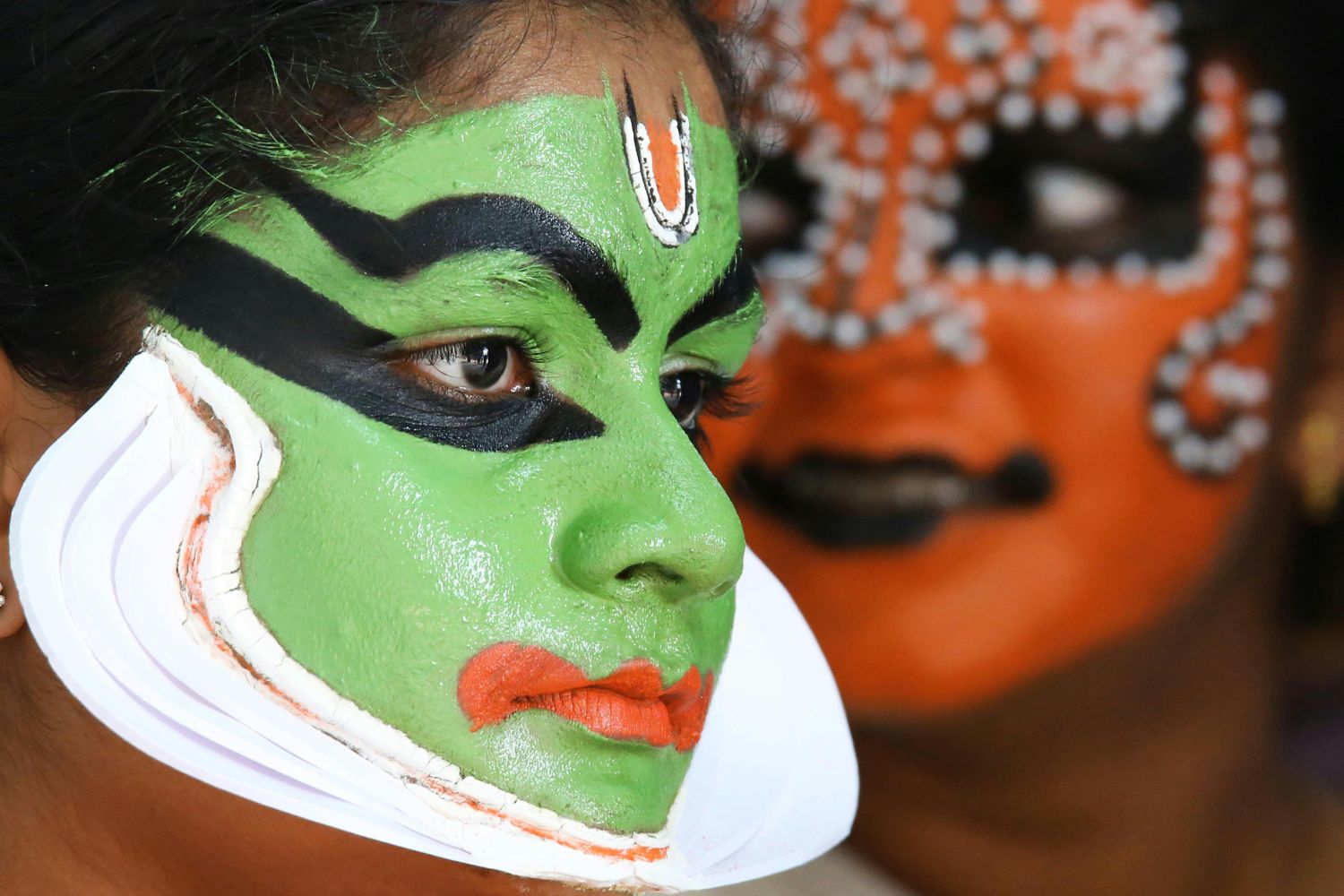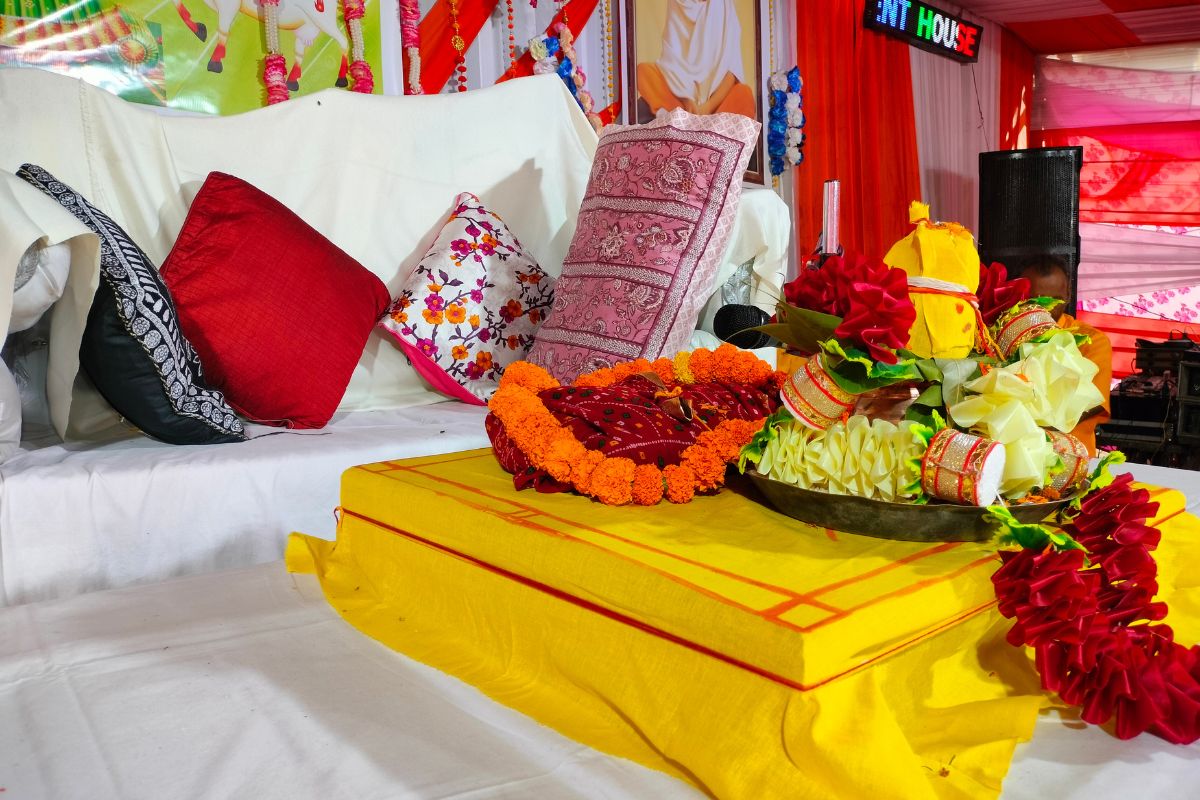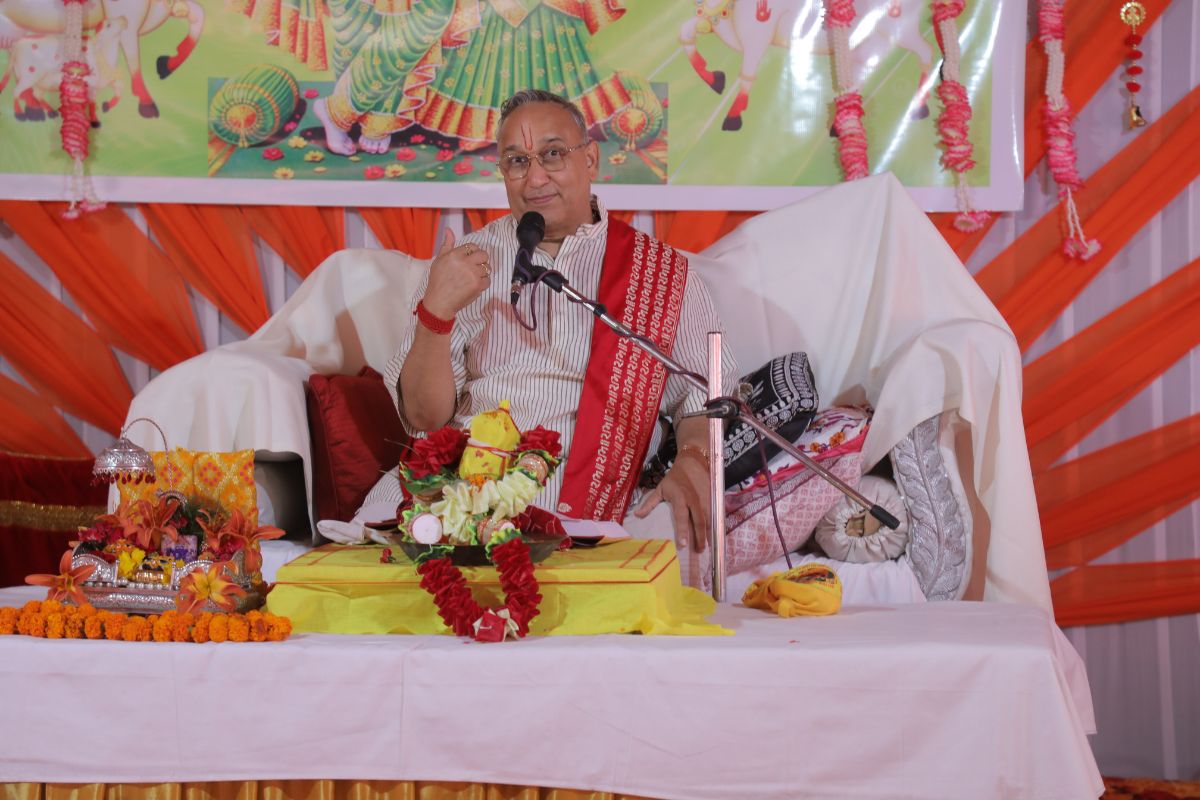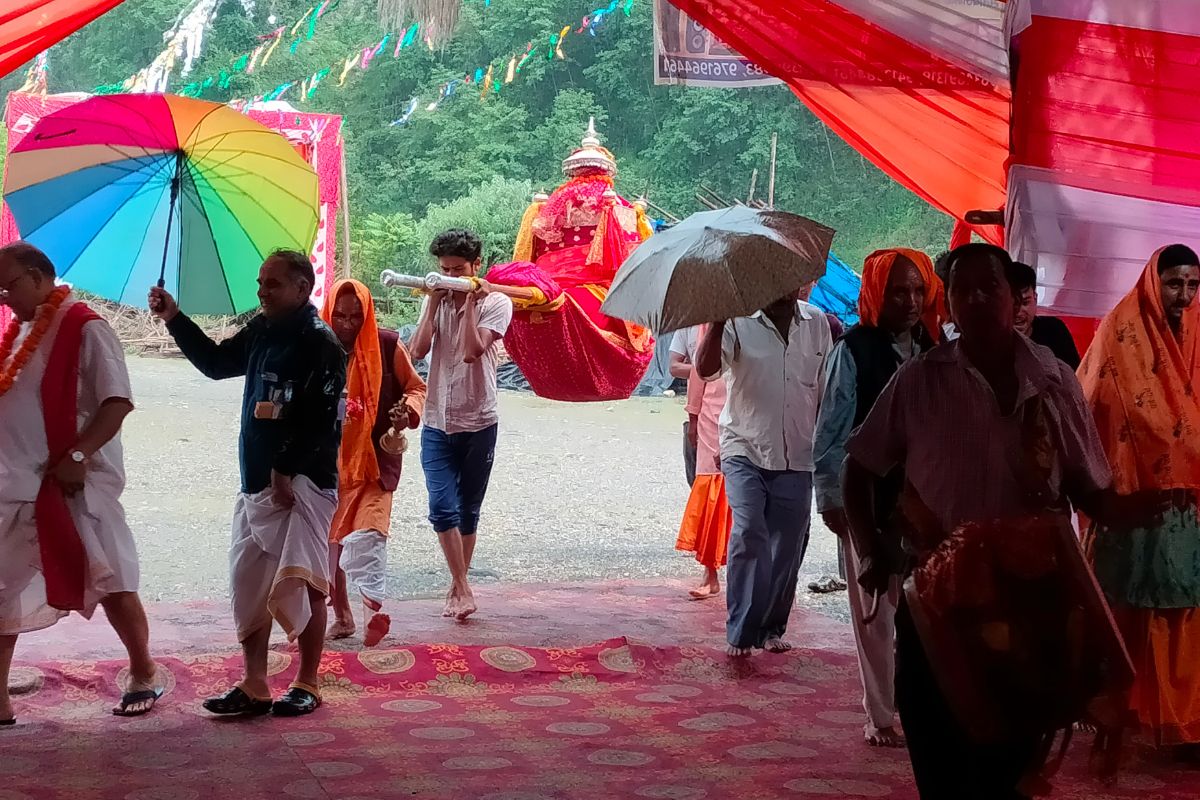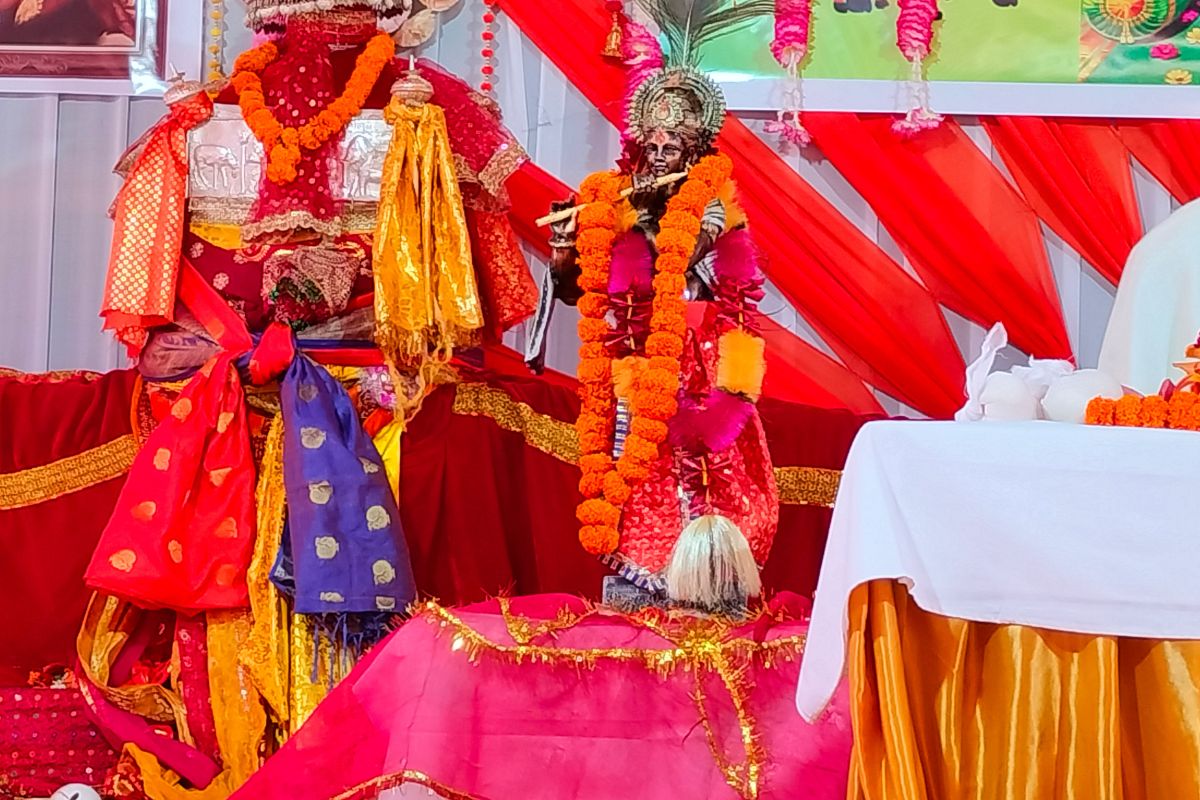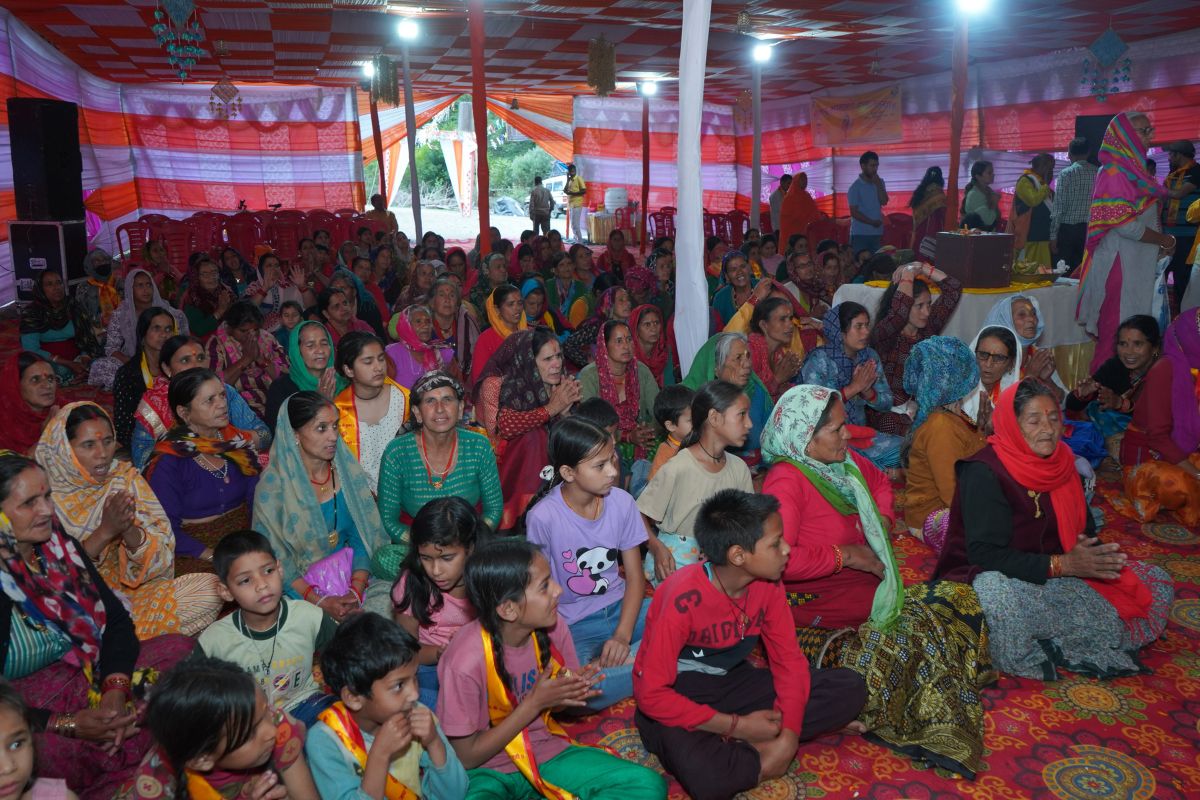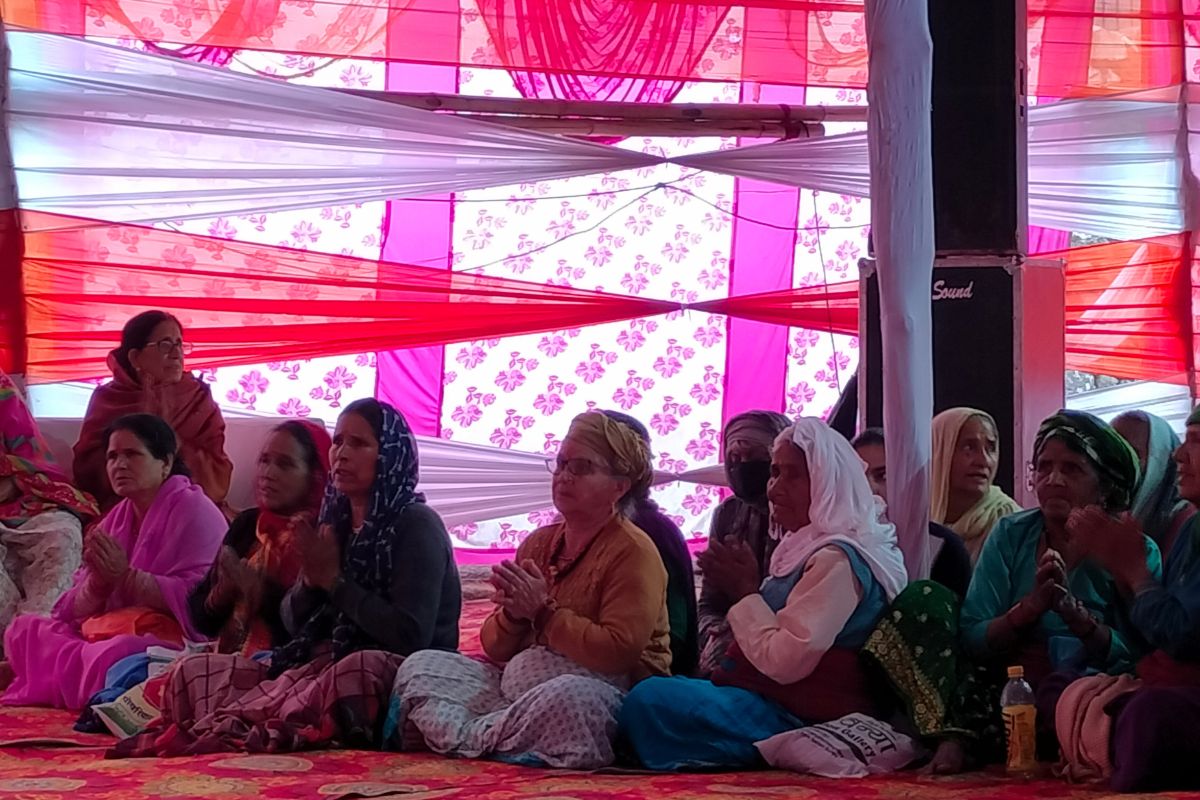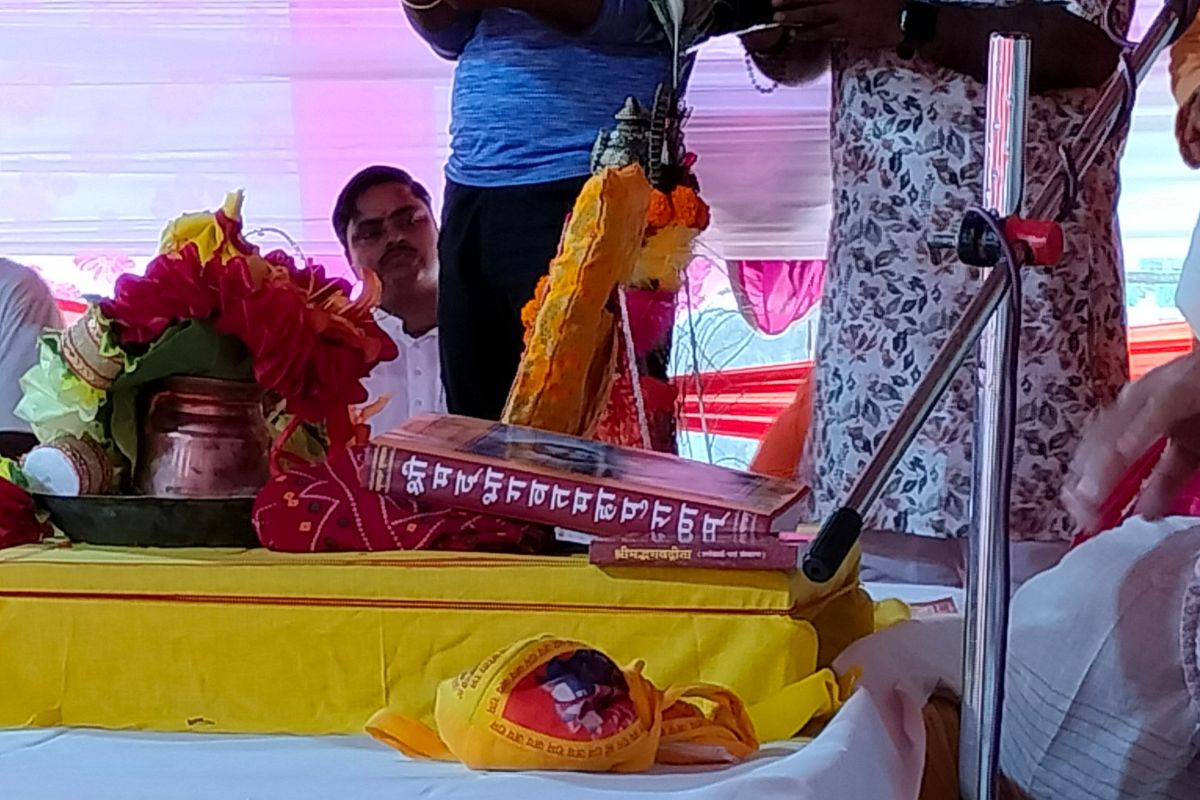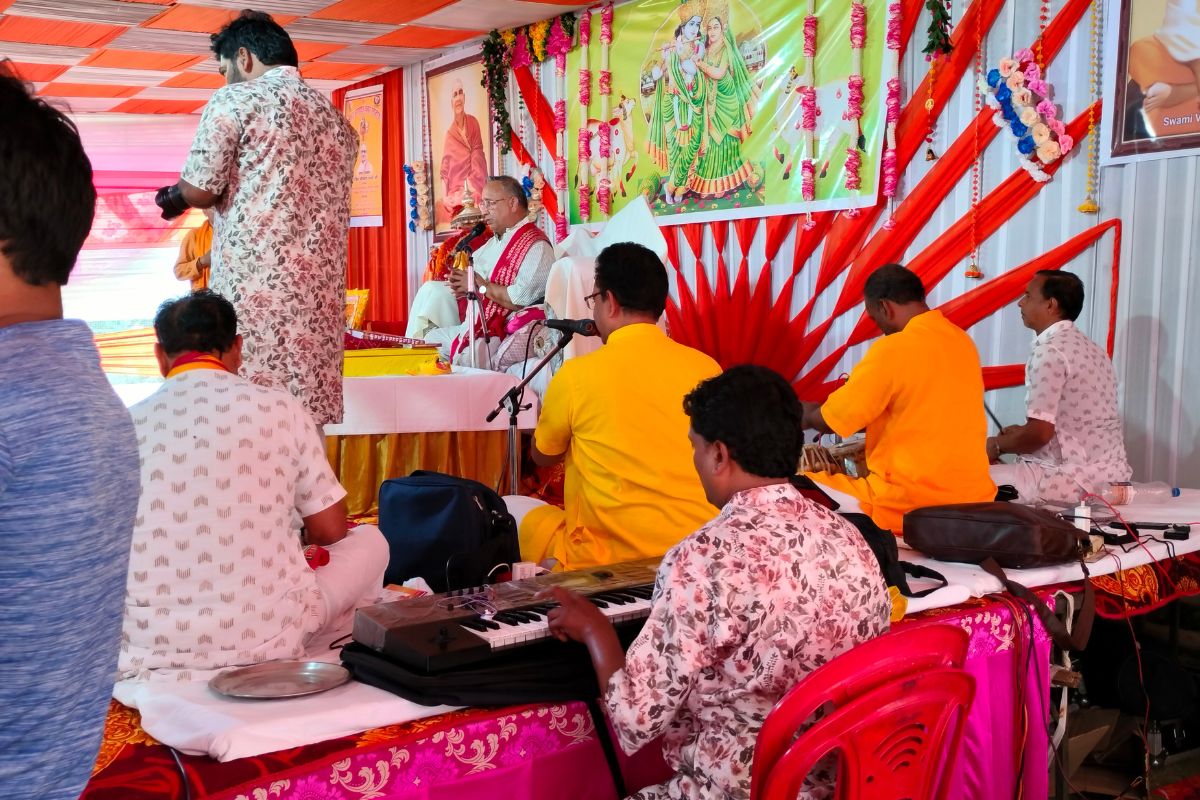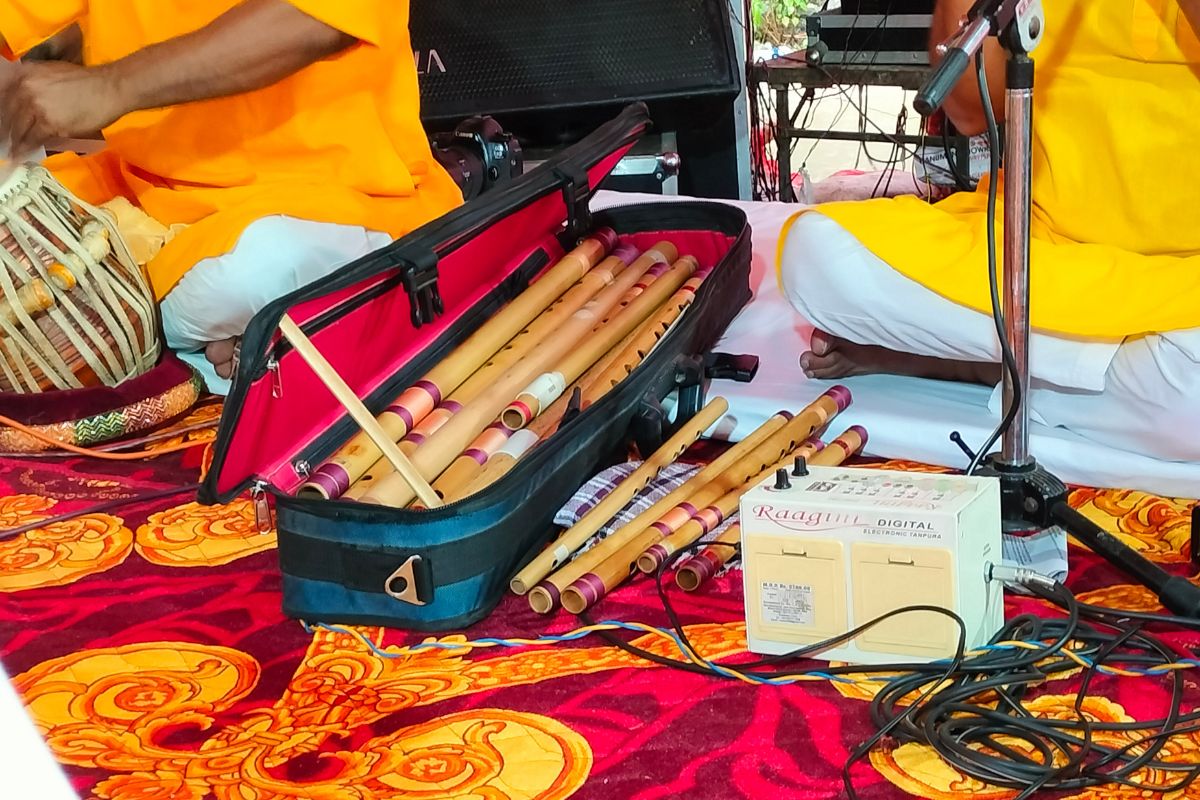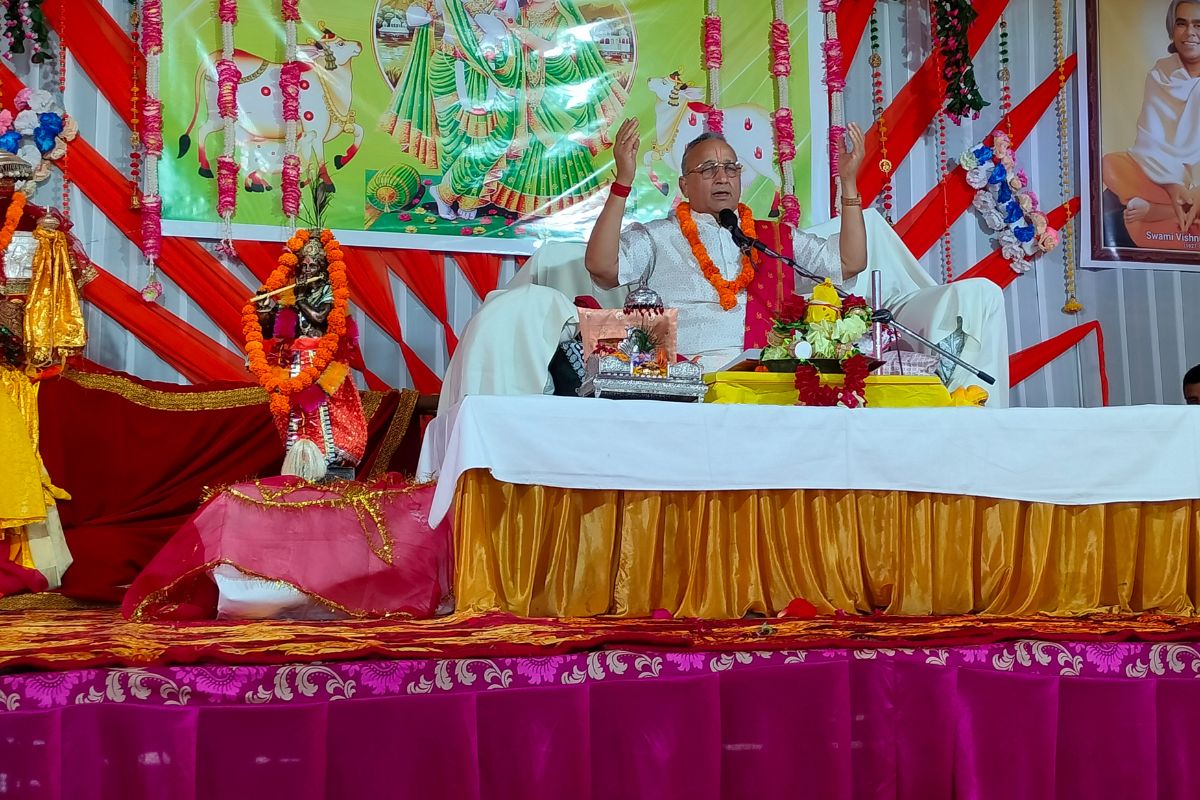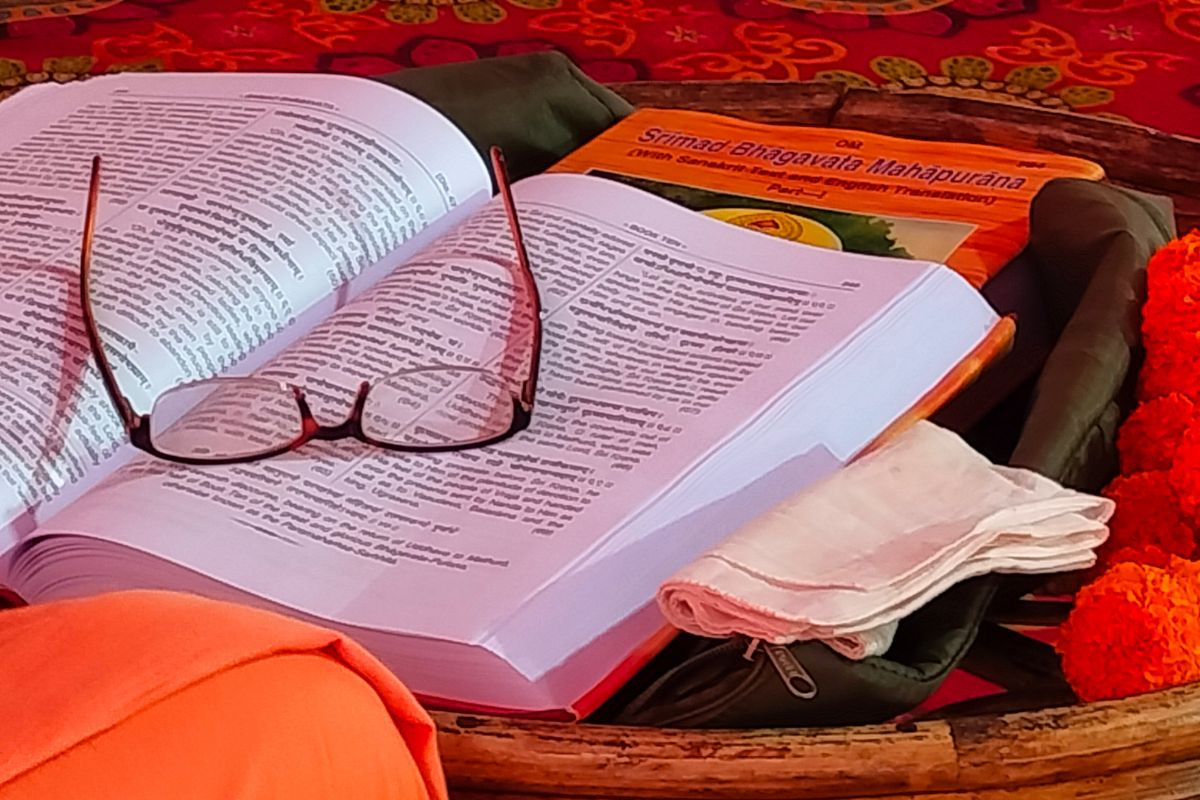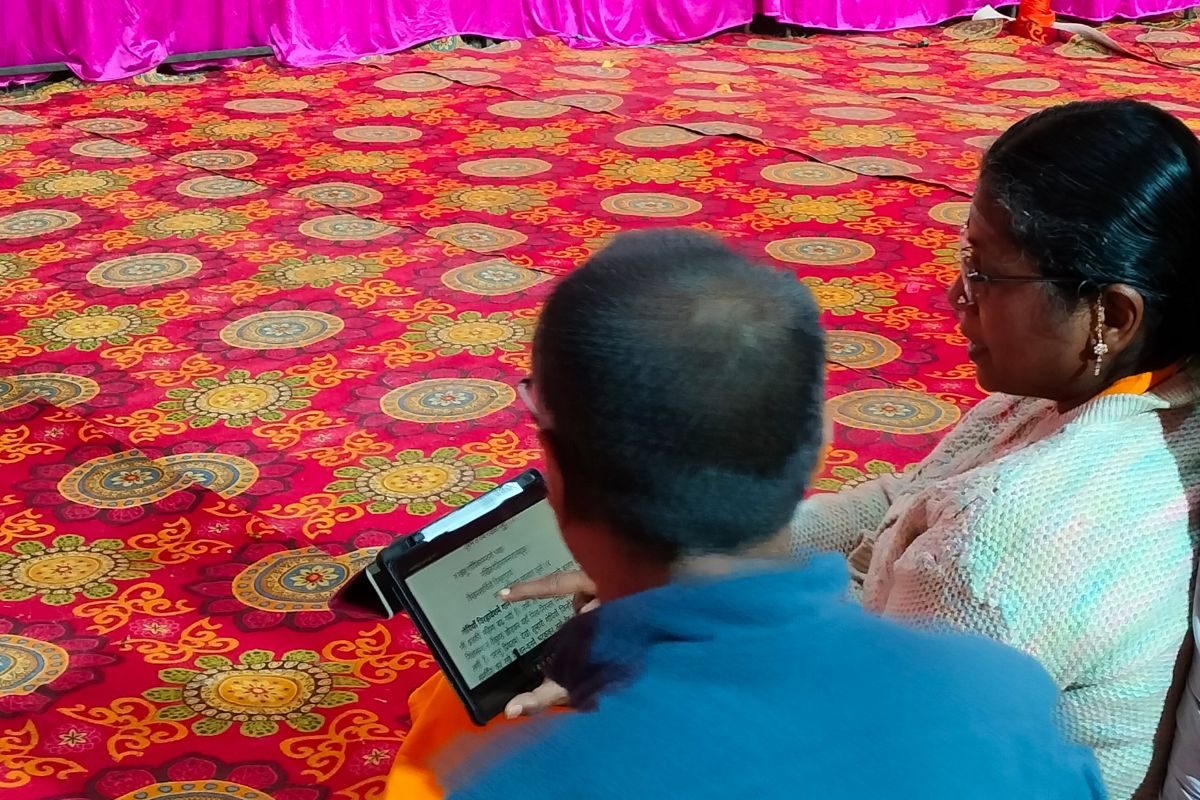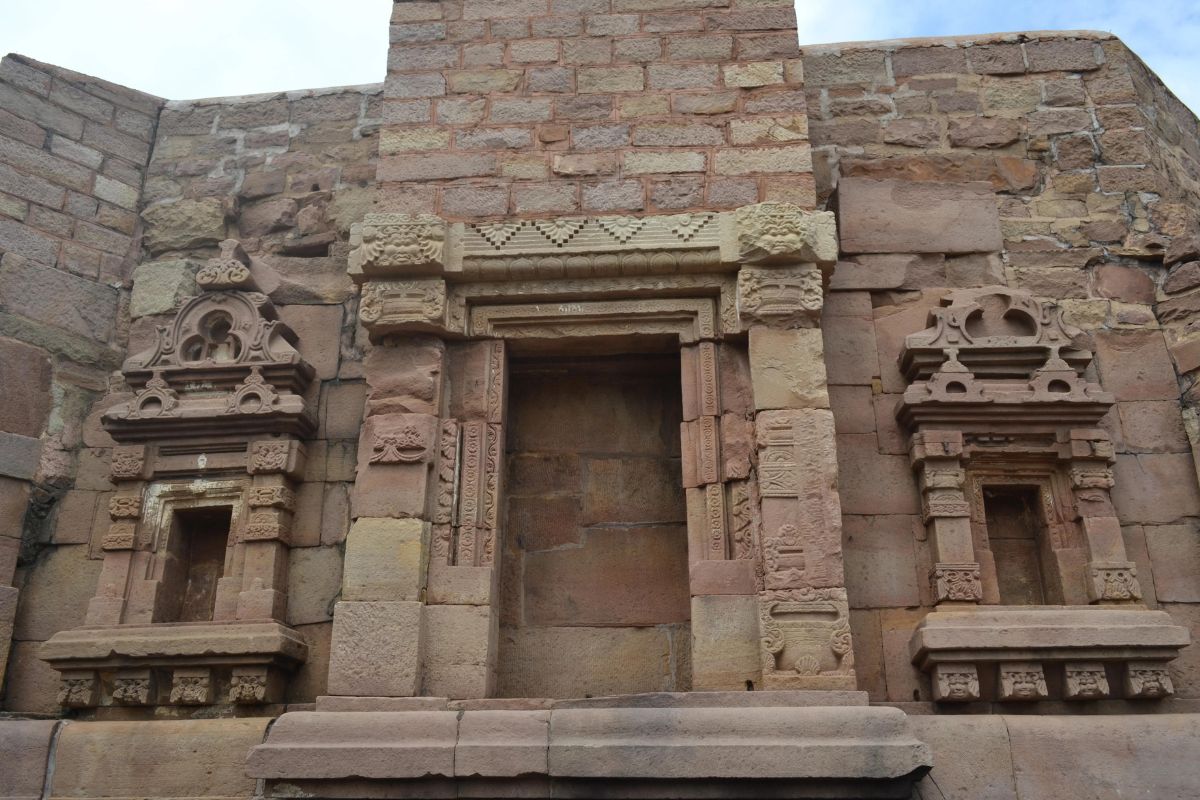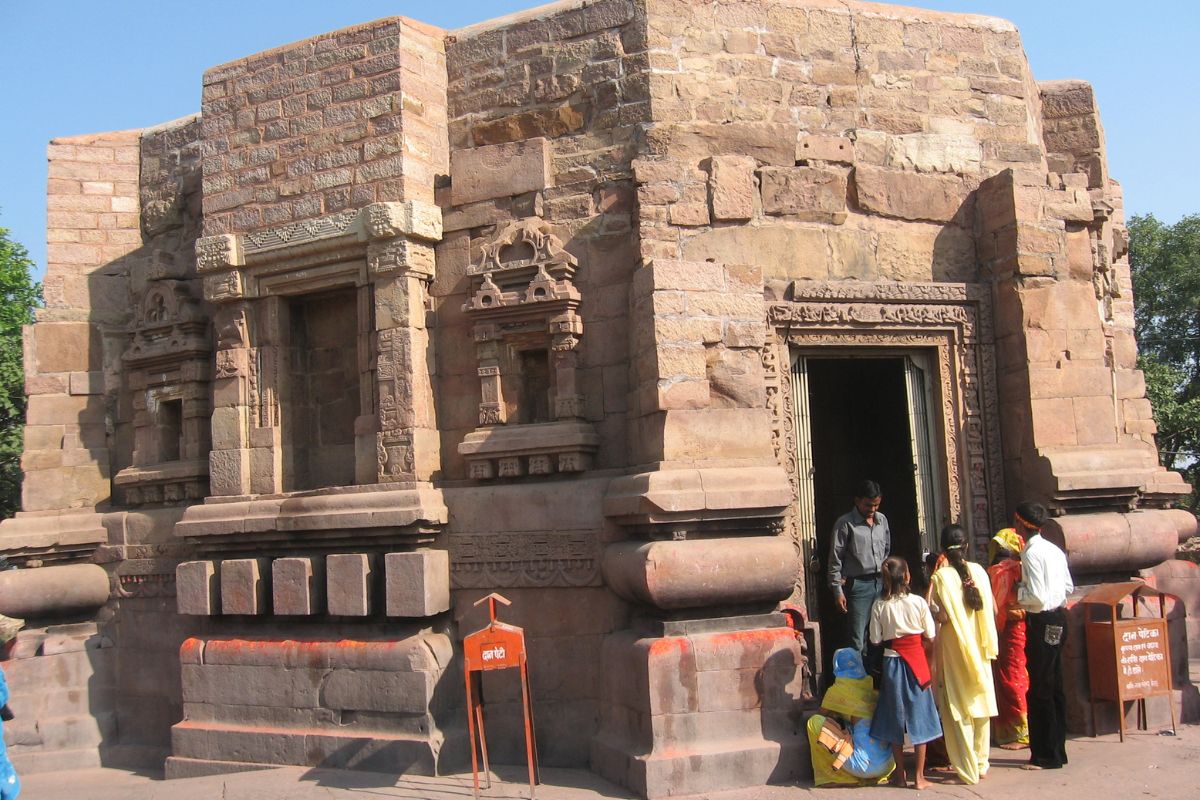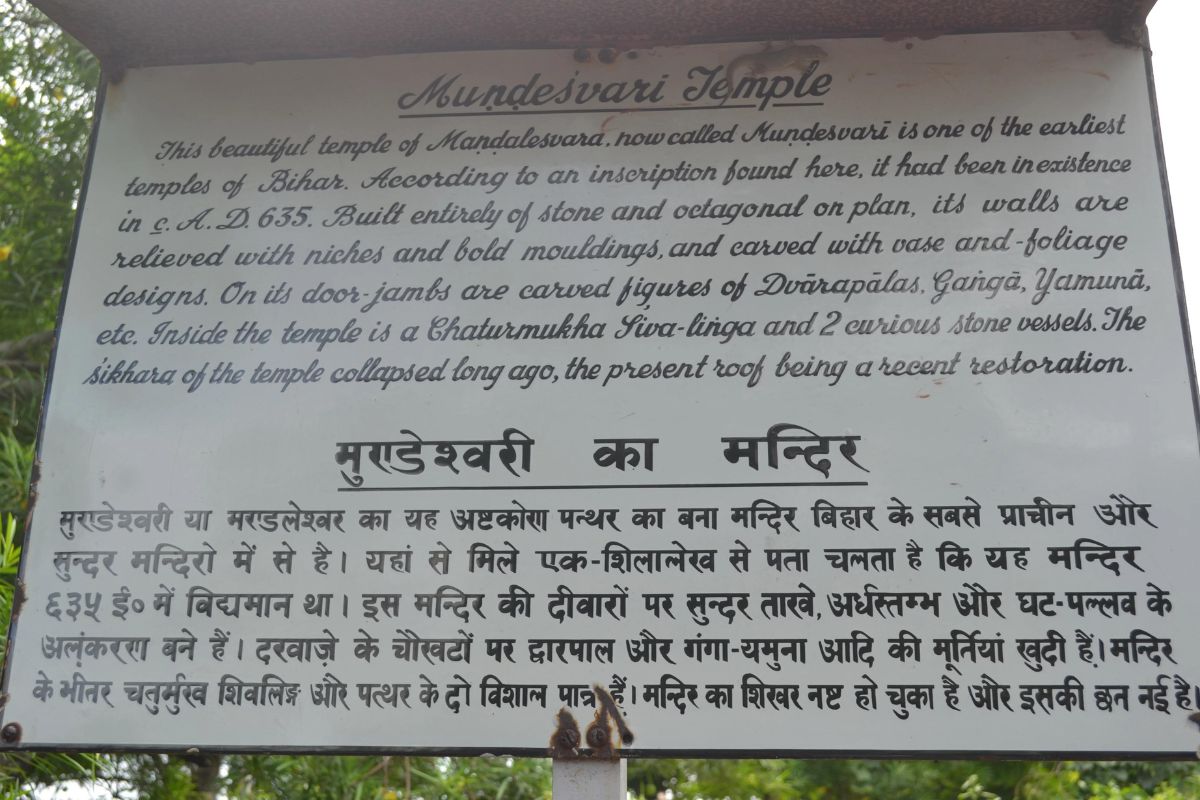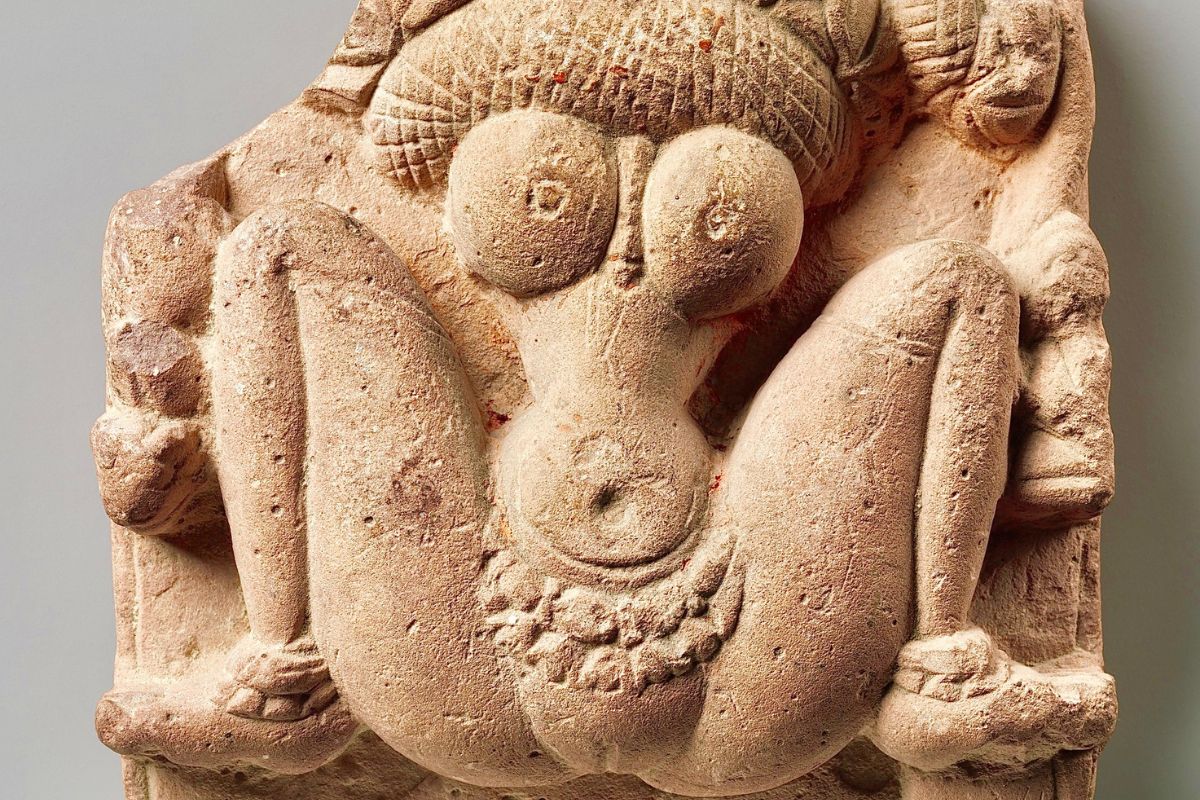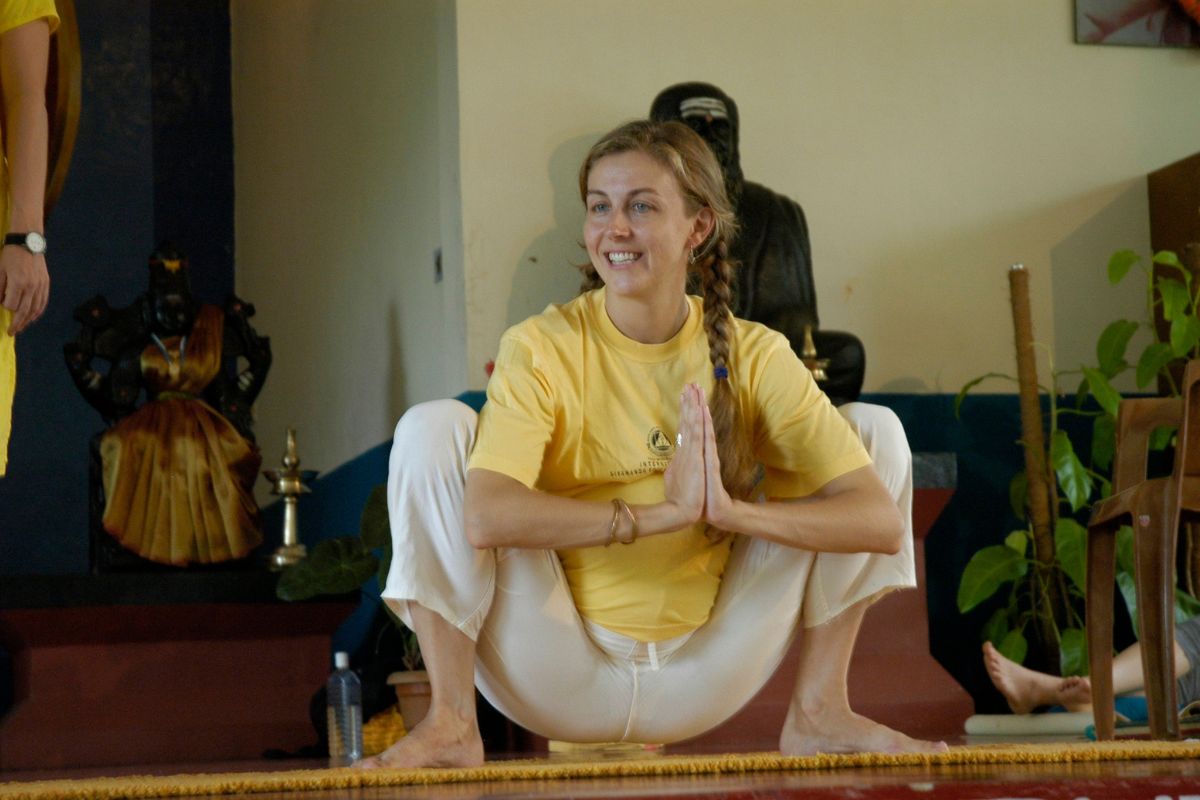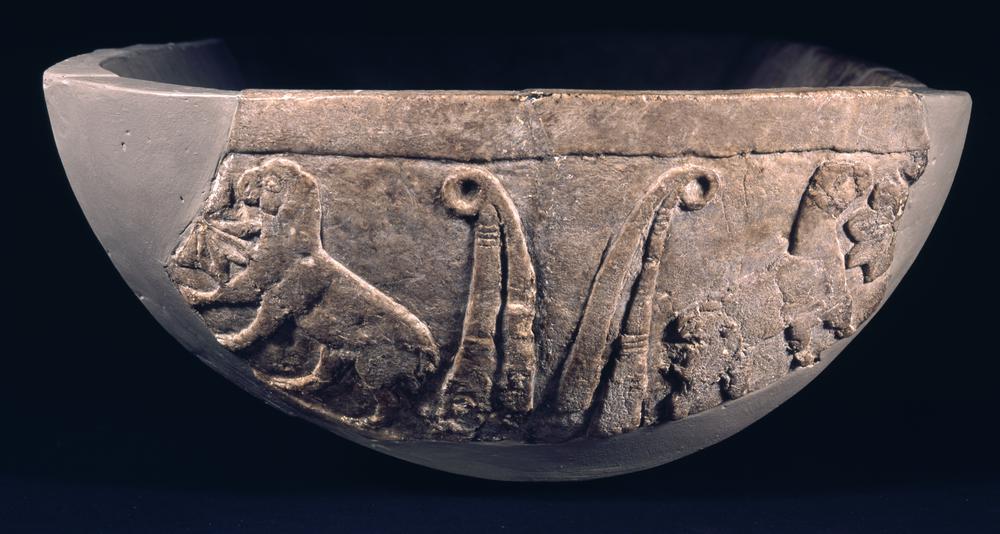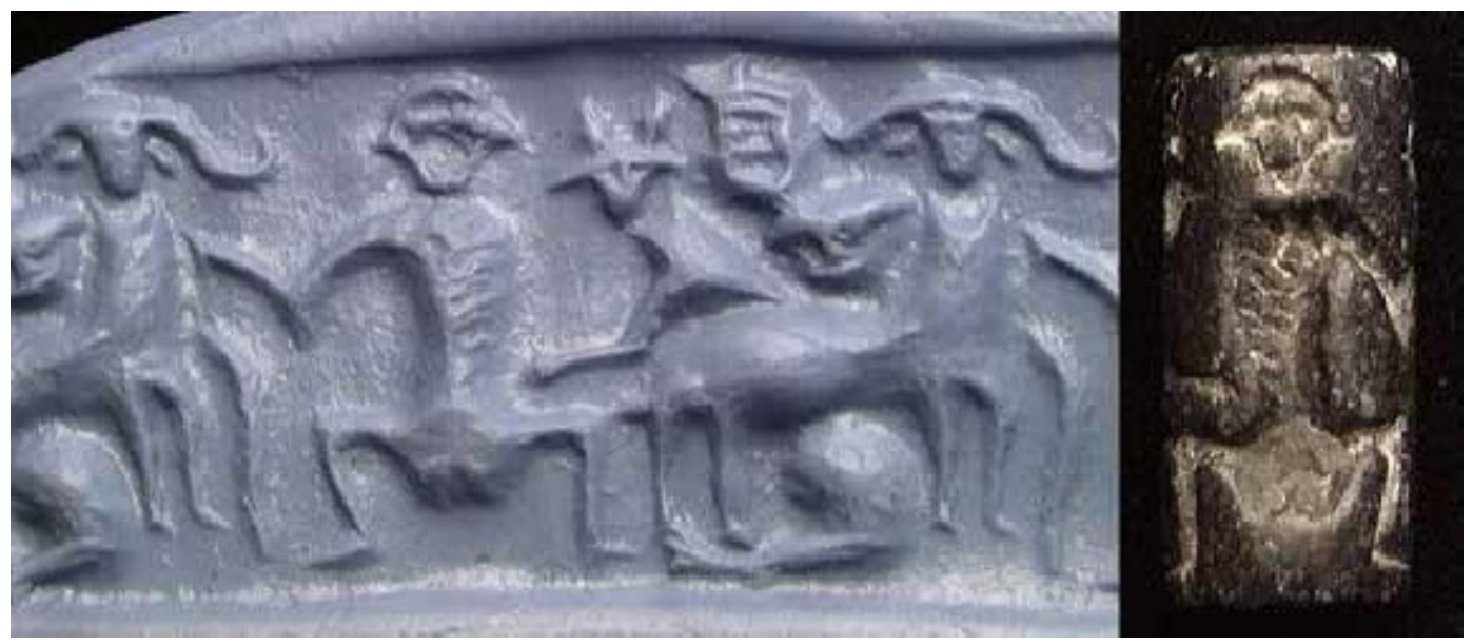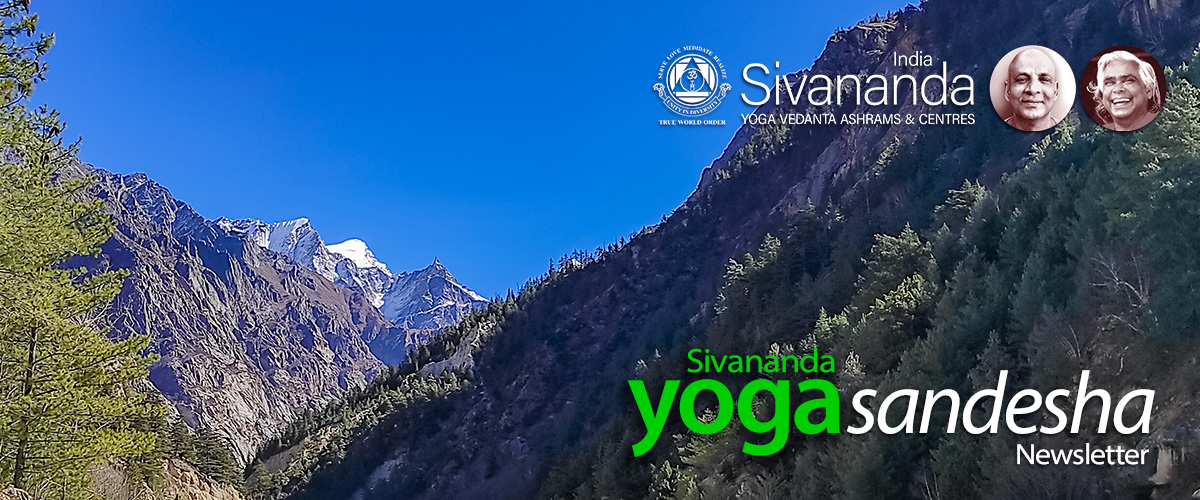
Om Namah Sivaya
Blessed Self,
Our teacher, Swami Vishnudevanandaji (Swamiji) believed that yoga must be introduced when young, so that kids can develop good qualities and the teachings will make a profound and positive impact on their life. To this end our Kids camp in Neyyar Dam followed by the Teen camp in Madurai ashram were very successful this year. The kids and teens appreciated the teachings and it was inspiring for us to speak to the parents and learn how these camps are positively affecting their children, helping them focus and become happier. The parents have even suggested we start a parents’ courses running parallelly with the kids’ camp, so that they too can enjoy Swamiji’s teachings and the ashram environment while their kids’ are busy with their programme.
When realised saints share their vision for the future, if we implicitly trust and follow, the results will be quite uplifting. Swamiji wanted all of our courses and especially the Yoga Vacation program to be offered once we obtained the property on the Ganges, in Netala, Uttarkashi. It took us many years to bring the Yoga Vacation programme, which began last year. Since we started there is not even a single bed available through the whole season. The Yoga Vacation guests long to be near the Ganges and appreciate the ashram discipline and Swamiji’s teachings. Meditating in the satsang hall while listening the strong sounds of the Ganga river flowing past is a truly unique experience.
Throughout his life, no matter where he was and what he was doing, Swamiji always wanted to come to the Himalayas, to stay next to Ganges, and to listen to the stories of the great Purana Srimad Bhagavatham. He also wanted to make this experience available to others as well. We began this programme last year, and this year we have been able to host a bigger event with a famous Bhagavathar, Sri Srikanth Sharma, from a Marwadi family of Rajasthan. Huge crowds of local people attended to listen to the stories, and appreciated our efforts in conducting such an event, which they had not experienced before. The programme coincided with our Anniversary special pujas, conducted by the special Kerala priests. It was truly a week of devotion on the banks of Ganges, enjoyed by ashram inmates, locals, and some VIPs as well.
These events in our ashrams and centres, together with the continued flow of students from around the world continue to inspire and motivate us to practice and to work to impart the teachings of Master and Swamiji.
May Master and Swamiji’s blessings be with you always.
Pranams,
Sivananda Yoga Vedanta Ashrams & Centres, India
Storytelling is both the social and cultural activity of sharing stories. Each culture has its own narratives which serve to share histories, moral values, and to serve as entertainment, and each person has their own version of the story. Storytelling and mythology predate writing and ancient storytelling takes many forms including rock art, singing, dance, maps, religious rituals, and oral narrative. Stories are a way for us to more easily understand and remember moral and philosophical teachings. In fact, a story can become the basis of our life. Telling our own story, or that of our ancestors gives us energy in the same way that eating does. It has been shown that storytelling aids in healing, offering inspiration and a feeling of control when we are ailing.
India has many different styles of storytelling from Kathakali dance of Kerala which almost resembles sign language in its subtle gestures and facial expressions, to comic books, cave paintings, palm leaf manuscripts, and the Ramayana told through puppet theatre. A unique storytelling format in India is the Katha, or religious storytelling in the form of a ritual event involving musicians, chanting, and recitation of stories from the Hindus texts such as the Puranas, the Ramayana, or the Bhagavata Saptaha from priest narrators. Kathas instill moral values and reflect philosophical teachings. In this issue of Yoga Sandesha we will share images and reflections of the Bhagavata Saptaha performed recently in Netala, stories from Punjabi cuisine, Swami Sivananda’s hilarious story of a kaupeen (underwear), the storied, and very old Mundeshwari Devi temple in Bihar, discover archaeological Evidence of yoga practices, and explore the pairing of asana practice with a creative writing exercise designed to discover the story of our own body. In fact, there’s so much to discover that we’ll publish Storytelling Part 2 in the July issue!
Thank you for taking the time to read Sivananda Yoga Sandesha. We hope you enjoy the newsletter and take time to reflect on your practice. As usual, please feel free to reach out to us with your thoughts and feedback: [email protected]
Photo Update:
Bhagavata Saptaha – Reflections on Devotional Storytelling
The Bhagavata Saptaha is a narration and explanation of the Srimad Bhagavatam or Bhagavata Purana over a period of seven days. The Bhagavata is one of the Puranas of Hinduism, composed in Sanskrit and attributed to Veda Vyasa, and dates to between 500 CE to 1000 CE. It contains the essence of all Vedanta literature and promotes devotion towards Krishna.
The following are personal reflections and impressions on experiencing the Bhagavata Saptaha as a ritual event.
As one with a very limited comprehension of Sanskrit and of Hindi, unable to follow the narration, I was aware that my senses were heightened. Peacocks cried in the distance and children played outside. A small puppy lay comfortably in the crowd. LED signs informed of those who had laboured to erect the tent, to provide a sound system. We all sat bathed in the pink light of the tent, appearing more festive by its glow.
This was storytelling elevated to a ritual and imbued with spiritual ideas and philosophies. Just being present put one in a devotional mood. I didn’t notice the Bhagavathar turn a single page in all the hours I sat, although the book sat in front carefully handled and protected, unwrapped, and then wrapped again in its cloth.
It was one-sided, in a good way, like a performance. A perfect devotional lecture. There were no mental gymnastics, no note-taking, no discussion, no doubt. The wisdom sung and everyone agreed to its truth. The rhythm, the music provided pauses, like punctuation. A rhythm of understanding. We nod and silently agree, feeling buoyed and understood. Or we lift the hands, a little higher, opening the palms. We gain understanding by the act of agreeing. Shaking the head from side to side. Clapping the hands during the chanting, we take the story inside ourselves, making it part of the tissues and the very cells of the body. The rhythm of the chanting bringing regulation of the the breath, heart, and mind.
Those devoted followed the text themselves in whatever form they preferred hardcover or iPad. Technology blended seamlessly with this ritual.
The community came together in a spirit of devotion and knowledge. People made donation of what they could—flowers pulled out of a pocket, money, grains. Like food, this story and its devotional mood were necessary. The local village Devata (deity) was carried in on a palanquin and offered a prominent position on the stage. At the close of the Saptaha the Devata nodded its endorsement of the event, which was frightening for some of the ashram inmates. The Devatas communicate with the villagers and their approval seems to bring harmony.
I look forward to experiencing this again. Please enjoy the photographs.
Upcoming Courses:
Learn, Practise & Grow with Us!
Teachers’ Training Course (TTC)
- June 16 to July 13, 2024,
Uttarkashi, Himalayas - July 21 to August 17, 2024,
Uttarkashi, Himalayas - Aug 18 to Sep 14, 2024,
Gudur, Andhra Pradesh
For more details, click here
Panchakarma Detoxification Programme (PDP)
- June 16 to June 30, 2024,
Neyyar Dam, Kerala - July 1 to July 15, 2024,
Neyyar Dam Kerala - July 1 to July 16, 2024,
Madurai, Tamil Nadu
For more details, click here
Sadhana Mandalam
- Aug 1 to Sep 9, 2024,
Neyyar Dam, Kerala
For more details, click here
Sadhana Intensive (SI)
- Oct 16 to 29, 2024,
Uttarkashi, Himalayas
For more details, click here
Teachings Excerpt:
Story of a Kaupeen, by Swami Sivananda
Once a kaupeen (underwear) got disgusted with the position it was assigned on the wearer’s body. It left him and went to Benares. There it was lying on the Ganges Ghat.
A Sadhu, who used to wear only a kaupeen on his person, and who had just then lost his only under wear in the current of the Ganges while taking a bath, chanced to notice this kaupeen lying on the Ghat. Finding nobody in the vicinity who could possibly be its owner, the Sadhu took it and wore it, thus saving himself from the embarrassment of moving about in a state of nudity.
The poor kaupeen felt sorry that it had to cover the very same part of the Sadhu’s person as it did in the body of the previous person. Hardly two or three days had passed when it realised that its new master was even more cruel than the previous one. The Sadhu, having no spare underwear, wore the new kaupeen all the twenty-four hours, whereas the previous owner wore it only on alternate days. The kaupeen mused within itself: “What a mistake I have committed! I ought not to have deserted my previous master. My new master does not give me a single day’s rest.”
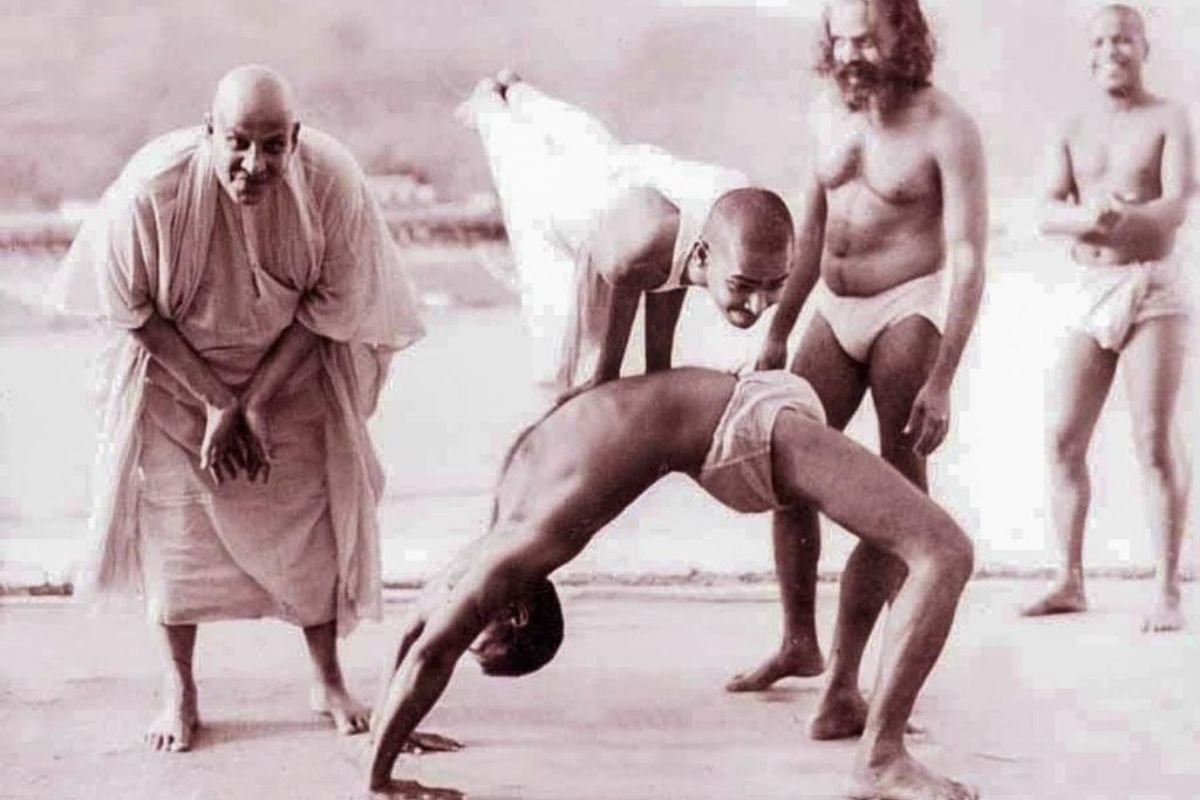
Similarly, a buffalo too got disgusted with its hard work of ploughing its master’s fields from morning till night. One night, while it was let loose for grazing, it ran off to a distant place. It was noticed by a farmer who, knowing that it had strayed away from its owner, made himself its new owner. He yoked it to the plough and made it work day and night.
The buffalo thought within itself. “Ah! what a blunder I have committed in running away from my previous master. He was indeed kind, for he never made me work at night, but my present master, cruel by nature, makes me work day and night and beats me mercilessly with his whip. I wish I had not deserted my previous master.”
The kaupeen and the buffalo realised that none can escape playing his ordained role in the scheme of God, and any attempt to escape would prove futile and only land one into greater difficulties and forced fulfilment of the assigned role. The kaupeen and the buffalo now learnt that wisdom lay in meekly surrendering to the Divine Will and discharging one’s allotted function, putting up with all the difficulties and inconveniences that one’s duty involved.
One cannot expect ideal conditions to prevail anywhere, for the moment one gets such ideal conditions, the mind will still find some defects in those conditions and crave for still better conditions. It is a trick of the mind to escape discipline. A man of discipline puts up with all conditions, adjusts himself to all kinds of situations and discharges whatever duties are assigned to him. Though difficult, he discharges such duties with a happy and cheerful heart. Such a man of discipline is a true devotee of God.
True devotion is self-surrender. Devotion does not consist so much in Japa, ecstatic Kirtan or elaborate ritual worship, as in surrendering oneself to the Divine Will and doing one’s allotted work calmly, in a spirit of divine worship, without complaining of anything, accepting everything as sent by God for one’s own quick evolution. The moment one adopts this attitude, every difficulty, every obstacle, becomes a help to march ahead on the path of evolution. To a true devotee who has surrendered himself to the Lord, no task is difficult, no task is mean, no work is an obstacle on the path of his spiritual progress, for he does everything knowing it to be worship of God and fulfilment of the Divine Will. He thus maintains God- consciousness at all times.
Yoga is essentially the maintenance of the state of God-consciousness at all times. It is not in Uttarkasi or Gangotri or in any place higher up in the Himalayas. It is in the right understanding that everything is God and all work is divine worship. Many aspirants leave the world and go to Rishikesh for seclusion. After a while they leave the place and search for seclusion higher up the Himalayas, at Uttarkasi or Gangotri. In the end they find it nowhere. Even at Uttarkasi or Gangotri one has to go to others for alms. One has to create seclusion wherever one lives. Seclusion is impossible on this earth. Physical seclusion is useless if it is not combined with mental seclusion. Aspirants make no spiritual progress by moving about from place to place. It is like a rolling stone that gathers no moss. It spoils their health, and in the end, like the kaupeen and the buffalo, they realise their folly in leaving the place where God had placed them, in search of better ones. Adapt, adjust and accommodate.
Spiritual Calendar
June 2 – Ekadasi
June 6 – New Moon
June 17 – Ekadasi
June 22 – Full Moon
Practice and Teaching Tips:
Does Your Body Have a Story? | Creative Writing & Yoga
In this video we pair the practice of several yoga asanas with a creative writing exercise. The theme is “Evolution” and the asanas include the butterfly, Baddha Konasana, Karna Peedasana, Pindasana, and Garbhasana—all designed to make the body as compact as possible. Practice according to your comfort and try to hold a little longer, breathing and taking your time. The writing exercise which follows is designed to look at the human body and to discover our own body’s unique stories, in terms of our life experiences as well as in an evolutionary sense. Enjoy a different approach to asana practice and discover latent creativity.
Have your yoga mat, a notebook, and a pen ready. Enjoy!
Food Stories:
Traditional Food Stories of Punjab’s Cuisine
Punjab is a global sensation because of its rich food culture and heritage cuisine. Historically, Punjab’s cuisine is influenced by the Mughal and European eras, and it echoes the story of its rich history, culture, and agricultural background. Punjab’s cuisine has won hearts globally for its irresistible aromas and mouthwatering recipes which speak loudly of experiencing food as a culture. The foods of Punjab are a testimony of interesting stories influenced by seasons, climate, history, culture, and the changes that Punjab has seen over different phases in its history.
The beauty of Punjab’s cuisine are the different moods reflected in each of its recipes. From rustic earthy flavors of village-style cooking to urban cosmopolitan style influenced recipes, Punjab’s culinary philosophy suits the taste buds of most people across the world. The magic of Punjab’s recipes is its use of local ingredients including wheat, rice, lentils, vegetables, and spices. Unlike other fancy cuisines of the world, Punjab’s cuisine has tapped in into the power of using common household ingredients and converting them into global delicacies without the need of adding fancy or expensive ingredients. The food is slow cooked over low heat to bring about the creamy texture and inherent essences of its ingredients. Makhani dal and sarson ka saag are some examples of slow cooked foods and which are then garnished with ghee and spices to enhance the flavours further.

Some mouth-watering traditional Punjabi recipes include:
- Aloo Paratha:
A mouth-watering delicacy where wheat chapati is cooked with mashed potato filling, spices, and ghee. Aloo paratha is irresistible, and you cannot definitely stop at one! - Sarson ka Saag & Makki Roti:
Sarson ka saag is a type of thick green leafy vegetable stew made by slow cooking mustard leaves. Makki (corn) Roti is paired with sarson ka saag to combine the two flavours of ayurveda, bitter and sweet for its detoxifying and calming action on the body and mind. - Chole Bhature:
A foodie’s delight, chole bhature is more of a Punjabi street-food with deep-fried wheat bread and seasoned chickpeas. The recipe is tempting to the eyes with its irresistible fluff and crispiness. The sweetness paired with the punch of spices makes it a tempting delicacy to binge on. It is thought to be a traditional delicacy coming from the Mughal era. - Amritsari Kulcha:
Stuffed bread with its origin in Amritsar is filled with seasoned mashed potato mixture; this kulcha or crispy bread is cooked in a tandoor until golden in colour.
- Rajma Chawal:
A Punjabi delicacy that is cooked and eagerly awaited in most Indian households over the weekend, Rajma and Chawal (rice) are delicacies that married ages back! Rajma (red kidney beans) are cooked in a rich and fragrant tomato-based gravy and cooked with a mixture of spices, including ginger, garlic, and garam masala. It is paired with boiled rice to combine the benefits of proteins with carbohydrates for a fulfilling weekend meal! Rajma masala has a colonial connection and inherits some influence of the British Raj which is known to have contributed to the introduction of kidney beans (rajma) to the Indian subcontinent. - Patiala Shahi Paneer:
Rich, creamy, and simply melting in the mouth, shahi paneer (set cheese) is a favourite of everyone including kids and adults. Prepared in a tomato and cashew-based sauce, this dish truly reflects the richness, grandness of Punjab’s zest for life. - Makhani Dal:
Also known as ‘Ma ki dal’, the taste, flavour and nourishment of this dal is no less than a mother’s love. A much comforting and fulfilling lentil dish made with black lentils, red kidney beans, butter, and cream, it is cooked on a low flame for hours and spiced to extract and enhance its rich flavours.
Temple Showcase:
The World’s Oldest Functional Temple – Mundeshwari Devi, Bihar
Mundeshwari Devi temple stands tall since the 5th century CE and holds immense historical and archeological significance, though there is debate about its age. Like many ancient structures, there are many stories connected with it. The temple has an unusual octagonal shape, more reminiscent of a Buddist stupa, and mythical creatures (makaras) as decorative motifs, as well as several uncommon sacrificial practices. Worshipped by both Hindu and Buddhist devotees, the Mundeshwari Devi temple architecture is a beautiful fusion of both Hindu and Buddhist architectural styles. This cultural blend of the temple attracts both Hindu and Buddhist visitors and its present-day caretaker is Muslim, making the temple and example of religious harmony.
The Mundeshwari Devi temple is dedicated to Lord Shiva and Shakti and is symbolic of the oneness of masculine and feminine energy. Located on a summit of an isolated hill about 600 feet high, the inner and outer ambience of the temple with several statues and carved rocks, speak loads about its history.
The Mundeshwari Devi temple architecture is octagonal in shape and built on the Nagara style temple architecture in Bihar. The four-faced lingam within the shrine represents Lord Shiva, while goddess Mundeshwari’s, incarnation as goddess Durga is placed on one of the shrine walls.
The temple exudes spiritual vibes, and its serene surroundings and ancient ambience creates an environment of inner peace and tranquillity. The Mundeshwari Devi temple is the oldest functional temple in India where rituals and worship take place constantly. For Hindu devotees, the Mundeshwari Devi temple is symbolic of the eternal union of Shiva and Parvati, the divine masculine and feminine energies of the universe. However, for the Buddhist devotees, the temple is symbolic of enlightenment.
The Mundeshwari Devi temple is also known for its unique ritual of Ahinshak Bali, or non-violent sacrifice. In this kind of bali (sacrifice), an animal is not killed, rather after the rituals, prayers and sacred mantras are performed on the animal, it is released.
According to legend, Lord Rama himself built the temple himself, having visited the site during his exile. The temple was built from a single rock, employing divine powers. The temple honours Devi Mundeshwari, an incarnation of Durga, who defeated the demon Mahishasura at this site.
The Mundeshwari Devi temple is located in Bihar, approximately 60 kilometers from the city of Varanasi in the state of Uttar Pradesh. Varanasi itself is one of the world’s oldest continuously inhabited cities.
From the Community:
Archaeological Evidence of Yoga Practices, by Chandrika S.
I am Chandrika S., a yoga practitioner and a research scholar in the field of Archaeology. The aesthetics of yoga practice and inquisitive facets of my archaeological studies allow me to think deeply about the practice. I am currently trying to explore the archaeological evidence corresponding to yogic practices.
I recently visited the Edakkal Caves in Wayanad, Kerala which are located at about 1200 ft above sea level and are among the most unique and the earliest rock art sites in Kerala with a large number of engravings that belong to the neolithic timeline of around 6000 BCE. This shelter was discovered by Fawcett in 1894, just 15 years after the historic discovery of the Altamira cave paintings in Northern Spain. The shelter has lower and upper stories. The lower story has a perennial water stream with no engravings. The upper story opens into a landing after a small trek which has huge boulders sheltered with cleaved rock formations leading to an area open to the sky. The rock surface on either side of the entrance is engraved with strange-looking stylized anthropomorphic figures, animals, and other symbolic representations. These anthropomorphic figures though linear in outline are quite articulate in execution.
Edakkal Caves, Kerala | 6th Century Lajja Gauri relief, Madhya Pradesh | Malasana
However, one anthropomorphic figure that caught my attention was in a squatting position (first image above). This figure reminded me of Lajja Gauri (second image), a female deity in a seated posture who may be considered provocative in appearance. The legs are bent and spread apart. The posture is associated with giving birth. In some examples, the belly portion appears like a pot (kumbha). Kumbha with a lotus directly associates the figure with purna ghata, which symbolizes fertility and auspiciousness. Mother Goddess fertility worship was one of the important practices right from prehistoric times and is continued to date.
It was during the Neolithic period the worship of Mother Goddess saw a tremendous rise. The term “Neolithic” is extremely difficult to define and determine as the transition from food gathering to food production was not in a uniform sequence. When agriculture predominated over hunting, the status of women raised and they were credited with the invention of agriculture. It marked an extensive development of primitive agriculture and the influence of a life-producing mother as the central figure of religion was extended to the vegetable kingdom. Mother Earth thus became the womb in which the crops were sown. “The identification of Earth with woman pervades the thought of all stages of culture,” says Briffault, a French social anthropologist. The same preconditions which fertilize women are also thought to fertilize Mother Earth. This also explains why the conception of Mother Earth is as varied as the degree of cultures attained by separate communities of mankind. This can also be seen in various Mother Goddess cult that exists in different parts of the world. The worship of linga and yoni i.e the male and female organs was nothing but the development of rites of fertility. The former symbolizes the act of cultivation and the latter, the fruit-bearing earth.
One such cult is of Lajja Gauri, where she is a symbol of regeneration. She is deemed to represent a woman in labour in the stage of expulsion, and not sexuality. “The Civilization of Goddess” brings together various settlements in the worship of the Great Mother. Quotable instances are during the Uruk period (4500-3100 BC), the influence of the Mesopotamian civilization spread in the various cultures developed in the Near East, from Anatolia to the Nile valley and the Balochistan plateau, and from the Mediterranean shores and islands to the Persian gulf. The worshipers at Uruk venerate the goddess of love, Inanna, daughter of the moon god Nanna and the great lady Ningal.
Uruk trough, 3300 – 3000 BCE, British Museum. Inanna token: a bundle of reeds.
Indus Valley seals also attest to the worship of Lajja Gauri and her worship is prevalent in the Deccan region of the Indian sub-continent. The finest examples are found at Sannati and other contemporary sites like Ter in Maharashtra.
Now, comparing this archaeological evidence to the asana practice, “mala” in Ayurveda means waste products of the body or those which pollute other components of the body. Practicing Malāsana mainly helps to get rid of three “malas” in the form of Purisha (Faeces), Mutra (Urine), and Sveda (Sweat). It regulates apana vāyu which governs the outward flow of energy on the breath, with digestive elimination, and with menstruation. Not only does apana vāyu guide the elimination of physical wastes, but also mental and emotional waste—that which no longer serves us. The posture also creates space in the lumbar spine and the spinal column. Malāsana stretches the pelvic region, inner thighs, and hips and strengthens the thighs. It may prepare the body of pregnant women for birth. Symbolically it replicates the image of the fertility goddess that was worshipped in ancient times. Apart from reflecting religious significance, it highlights the benefits of physical and mental well-being that are included in yogic practices.
Indus Valley cylinder seal, Mature Harappa, 2700 – 2300 BCE, Private collection.
References:
- Bhattacharyya, N. N. (1996). History of the Śākta religion. India: Munshiram Manoharlal Publishers.
- Martin, M.L. Lajja Gauri, the goddess of sexuality, from Mesopotamia to India, Amazon.
“The kitchen is the fighting centre in an Ashram. All sorts of troubles and misunderstanding, hatred and jealousy among workers, emanate from the kitchen. I can easily find out the taste, temperament and spiritual progress, and control of the senses of the students from the stories I hear from the kitchen side. That is the main centre of disturbance in an Ashram. But it is the best field for a quick spiritual evolution of the workers, for developing cosmic love, sympathy, mercy, patience, generosity. People are well trained to adjust and adapt themselves here in a marvellous way.” -Swami Sivananda

